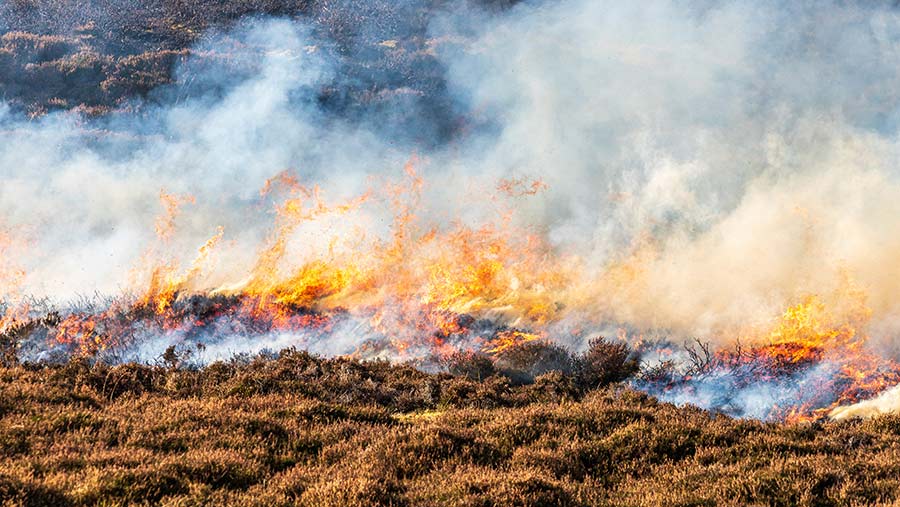Opinion: Muirburn legislation sparks concerns among crofters
 © Stephen/Adobe Stock
© Stephen/Adobe Stock The late agriculturalist Sir George Stapledon was ahead of his time.
With a pioneering understanding of the importance of land management psychology, he recognised the countryside as “the main battlefield on which the struggle for the nation’s soul takes place”.
Stapledon would be disappointed to see that more than 60 years after his death, we’re still in the trenches.
See also: Opinion – single-interest thinking is bad for the countryside
The Wildlife Management and Muirburn Bill is currently making its contentious way through the Scottish parliament, and crofting finds itself sitting on a landmine that was supposedly laid for grouse shooting.
The bill has several parts, but of special interest is its proposed restrictions on muirburn.
If the bill passes in its present form, our traditional management practice of small-scale vegetation burning will require a licence from NatureScot.
That’s at any time of year, on any type of land – although restrictions will be tightest on peat deeper than 40cm.
In these carbon-dominated times, burning heather might sound foolish.
Expensive media campaigns by anti-shooting groups would have us believe that muirburn is only carried out to increase numbers of red grouse.
But in reality, heather moorland is a grazed habitat used by crofters for centuries. It is the characteristic upland heath plant community of the Highlands and Islands.
If it isn’t grazed or burned, it gets colonised by trees and eventually becomes woodland.
Then the ecological community changes and moorland specialist species, such as hen harrier and curlew, have to move out.
Biodiversity is reason enough to keep our moorlands managed.
But unmanaged heather stands are uneconomic for agriculture, with poor nutrient content and lower carbon sequestration.
Degenerate heather makes for easy ignition, as seen in recent wildfires. Searing wildfires release carbon, burning the underlying peat, threatening homes and killing wildlife.
In contrast, a well-managed muirburn is small, rotational and cooler – it doesn’t burn the soil or get into the peat. It also reduces the overall fuel load, mitigating the wildfire threat.
And muirburn is a natural process. Fire is one of the oldest land management tools – and heather has evolved with fire in its ecology.
Fire stimulates heather seed. It sparks robust regeneration.
But because muirburn has become associated with grouse shooting, it’s a prime target in the ideological fight against land inequity.
We’re told that muirburn licences will work perfectly, but they haven’t yet been designed. Politicians say all will become clear once the bill becomes law.
We know that the applicant will need to calculate peat depths, although there’s no reliable dataset available to help.
With crofters usually holding down multiple jobs, managing paperwork is already a struggle. It remains to be seen how they’ll find time to march around common grazings with a peat probe.
There’s a view in lobbying circles that if something remains technically legal but locked in so much red tape that it becomes practicably impossible, then that’s as good as an outright ban.
Looking at this new legislation, that cap fits.
In Scotland’s psychological battle for land justice, crofters are struggling to be heard above the noise. Traditional crofting is becoming collateral damage.

